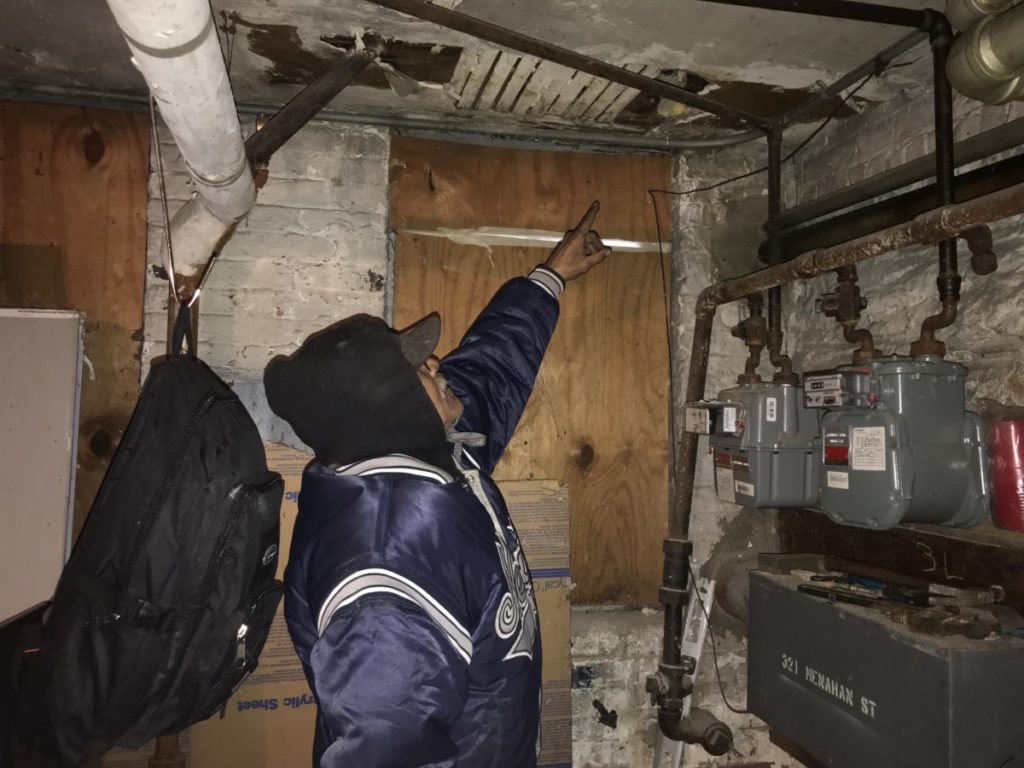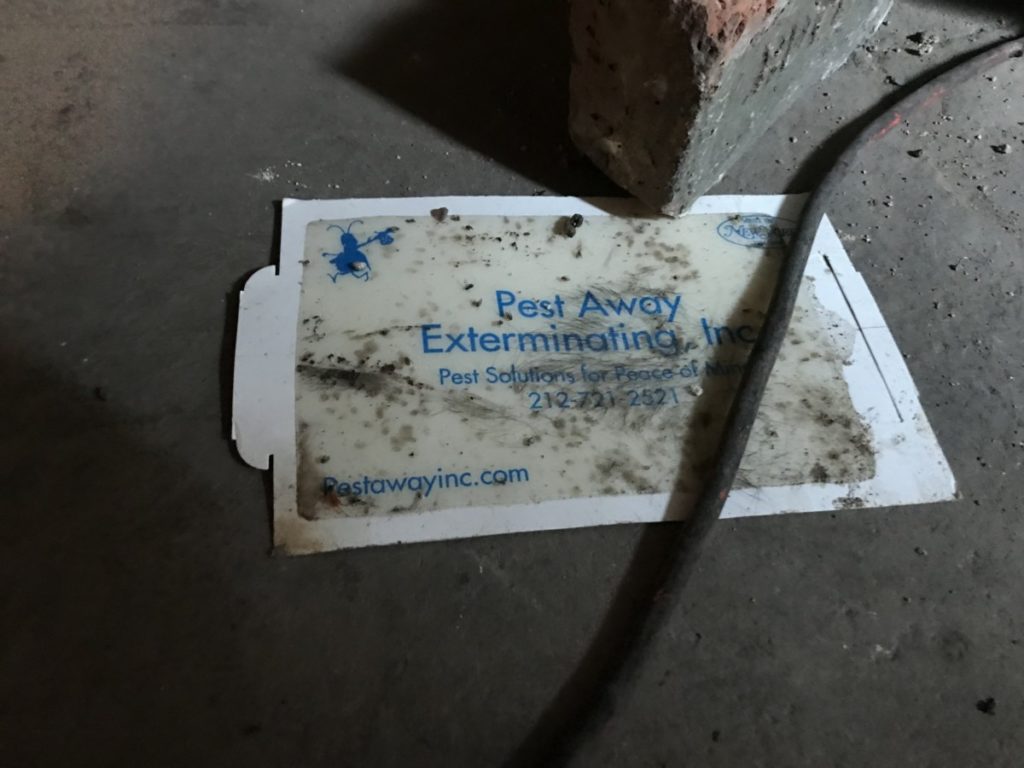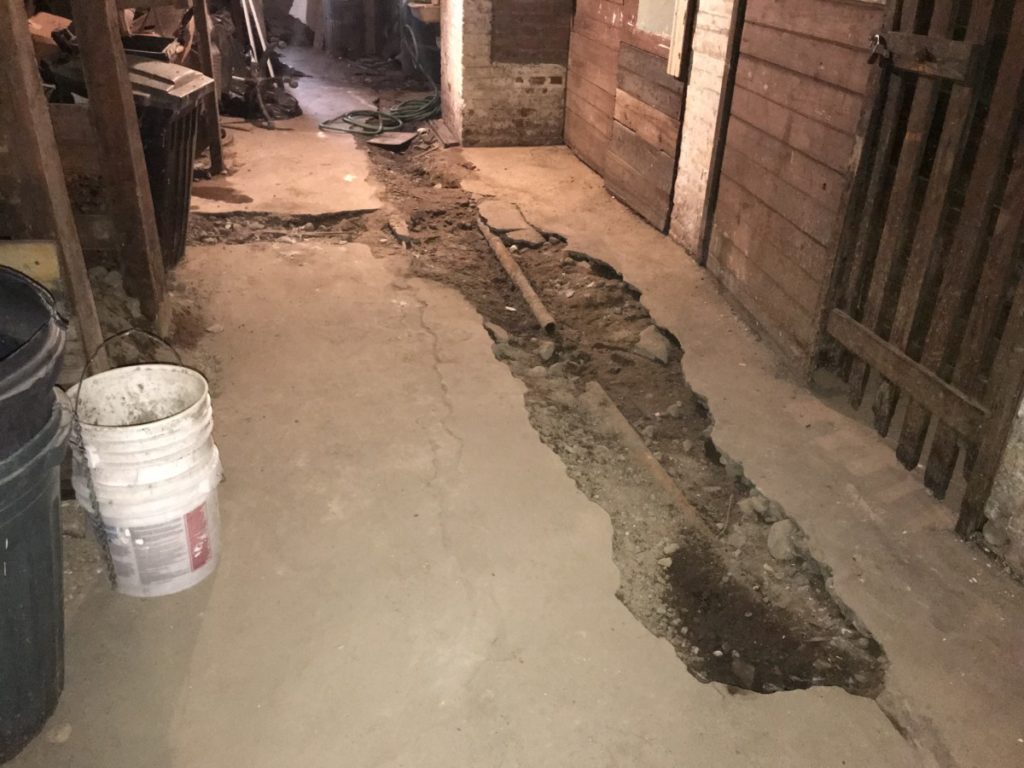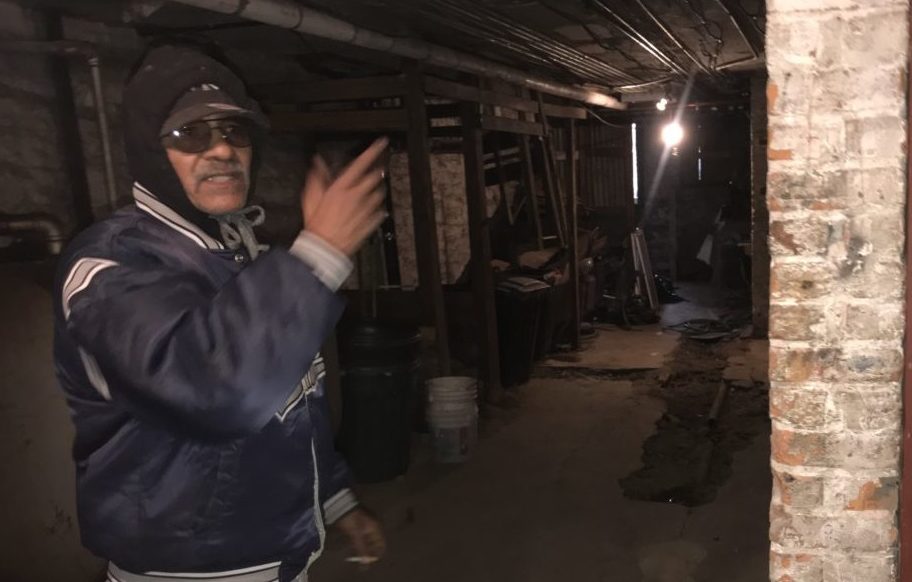Ralph Martinez has grown used to the stench of rats. For the last three months, he has regularly visited his mother’s apartment building on 321 Menahan Street in Bushwick, dedicated to finish cleaning out a cellar basement that he says is teeming with rodents. “When you’ve got a dead rat, you can smell it through the whole basement,” Martinez said. “You can’t even walk in here with that smell.”
Martinez goes down a set of steps into the cellar, where he has laid four sets of glue traps on the cracked cement. He points to the corners of the walls, where parts of the ceiling have given way. “All the holes here are nothing but rat holes,” he said. The 69-year-old man’s hands are hardened by decades of construction work and his fingernails are black with dirt. For the past three months, Martinez says, he has been sweeping out debris, hauling away clutter, trapping mice, and cleaning out a sewage spill in the basement—and he’s certain that if he didn’t do it, no one else would.

“You could say I’m the super,” Martinez said. “I do more work than him, and I don’t get paid. And I don’t even live here.”
The building currently has 29 open violations from the Department of Housing Preservation and Development, ranging from water leaks to orders to repair broken appliances. Public records show tenants in the six-unit building have issued seven formal complaints this year, including for heat problems, hot water issues, missing or broken locks, and cracked ceilings. And now, the owner of the building, Silvershore Properties, is under fire for racking up similar violations across the city.
In November, the New York City Public Advocate’s office named Jonathan Cohen of Silvershore Properties the No. 1 worst landlord in all of New York City. The office releases the “NYC Landlord Watchlist” every year to keep watch over landlords with high HPD violations. According to the watchlist, Silvershore maintained an average of 1,090 open HPD violations across 19 buildings on the watchlist this year—which is more than any other property owner named in the report. Four of those 19 buildings are in Bushwick.

On Thursday, Martinez, whose mother and uncle have lived in the building for more than 20 years, was shocked to learn about the landlord’s top ranking. But tenants in other rent-regulated buildings owned by the company were unsurprised, including Martha Santiago, a mother who has lived on 20 Menahan St for 13 years. Santiago claims she recently rejected a buyout offer from Silvershore after months of inconsistent access to hot water and unreliable heat. Plus: “We have no super,” she says.
But her claim contradicts Silvershore, which maintains every building the company owns has a super assigned to it who deals with repair issues every day. “We buy long-neglected buildings and are on this list because we inherited these problems through recent acquisitions,” a company spokesperson wrote in an email. According to the spokesperson, more than 700 of the 1,090 violations cited in the report have been already fixed and are waiting for final city inspection. Of that number, the company says 120 violations were removed the same week the report came out.
“The report’s methodology does not accurately reflect our position as owners fixing issues caused by prior landlords,” the emailed response reads. “We worked very hard to maintain our buildings.”
The business model
Tenants rights organizers don’t dispute Silvershore’s claims that most of its violations could be inherited from previous owners. In fact, according to advocates at the Urban Homesteading Assistance Board, buying dilapidated buildings is common practice among mega-landlords. What’s more surprising, they say, is how much landlords are paying for those properties.
The price that landlords “are paying for these buildings don’t align with the income they’re able to make off of them,” said Samantha Kattan, assistant director of organizing, policy and research at Urban Homesteading.
Because landlords like Silvershore often buy rent-stabilized buildings, they become subject to a relatively fixed or predictable revenue stream from tenants, due to restrictions on how much rent can be raised each year. But according to Kattan, many major property owners are buying rent-stabilized buildings at unsustainable prices given those restrictions. That practice often either leads to the harassment of rent-regulated tenants in order to drive them out or, if that fails, a lack of repairs and maintenance.

The Brooklyn Ink
“Buildings will actually fall into deeper disrepair after they’re bought at an unsustainable price in relation to the rents people are paying,” Kattan said. “The money has to be taken from somewhere, and it almost always is taken from money that would go into making repairs quickly and at a decent quality.”
She and other tenant organizers recently argued that point successfully to lawmakers. At the end of November, the New York City Council approved a bill to track residential buildings with low capitalization rates, or buildings with high purchase prices but relatively low income rates. The bill also requires the city’s Department of Housing Preservation and Development to create its own watchlist of rent-regulated buildings where tenants are vulnerable to displacement.
Public watchlists like the one that targeted Silvershore do seem to have some effect on landlord practices. Shortly after the city named the Silvershore Properties the worst landlord, the firm hired a management company at 166 Bleecker in Bushwick—an improvement that tenants living there say was long overdue. When asked if the decision came in response to the city’s report, a company spokesperson said, “We had been considering using an outside management company before the report was issued but implemented that decision afterwards.”
For now, Ralph Martinez, the construction worker trudging into his mother’s cellar, has no faith maintenance will step in to repair the building’s deficiencies. When asked why he continues to spend his own time and money on repairs and rat traps without compensation, his answer was immediate: “Because of my family. I don’t want my family here forgotten.”


Leave a Reply